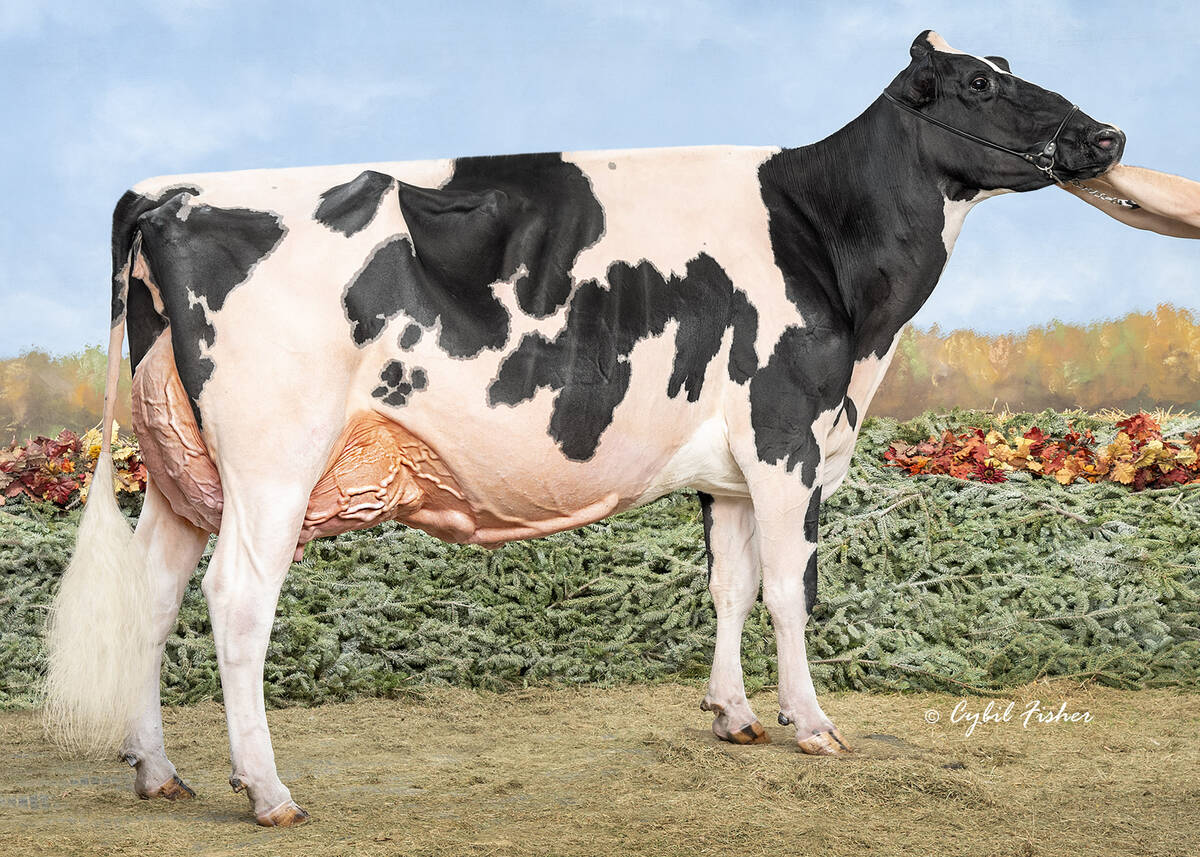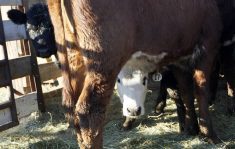If 1999 was stellar for Canadian Aberdeen Angus Association numbers, 2000 is taking them to another plane.
By this May, there were more purebred Angus cattle registrations than had been recorded in all of 1999.
The association has had nine years of steady growth. In 1999, more than 65,000 purebred Angus cattle were recorded; 47,000 registered and 21,000 transferred to the registry.
Membership has risen to about 3,000 breeders across Canada. About 45 percent of them live in Alberta.
“It’s really an exciting time to be in the business. I remember a time when we got discounted,” said association past-president Mabel Hamilton. She and her husband Gavin run Belvin Angus at Innisfail, Alta.
Read Also

Saskatchewan dairy farm breeds international champion
A Saskatchewan bred cow made history at the 2025 World Dairy Expo in Madison, Wisconsin, when she was named grand champion in the five-year-old Holstein class.
Registrations are up for females and bulls, with equal popularity among reds and blacks. At one time a red Angus was considered genetically defective but today, red animals make up about half the registrations.
In the United States, there are two separate associations representing blacks and reds. In Canada, both are registered under one organization, with the reds carrying an ‘R’ or the word ‘red’ in their pedigrees. There is also a Red Angus promotion
society.
The success of these naturally polled beef cattle is attributed to a number of factors.
Black is considered beautiful in the U.S. and there is a sea of black cattle in every state. But the unparalleled popularity of black cattle has led to concerns about copycats, where anything with a black hide is automatically accepted.
“Every breed wants to be black and everything is being kept a bull that shouldn’t be,” said Hamilton. She does not want to see the market flooded with substandard animals.
“We got to where we are because we have good quality.”
For breeders like Hamilton, what’s under the hide is what counts.
The Angus breed was developed in Great Britain nearly 200 years ago, strictly for its beef. Years of attention to improved beef quality have been a boon for the breed.
Angus are known for their genetic ability to deposit traces of fat in their muscle tissue, known as marbling.
In the last two years the association has started a carcass merit study and the first results are expected to be tabulated later this year.
Angus association general manager Doug Fee hopes the data will bear out anecdotal evidence that Angus-influenced carcasses consistently grade higher.
To further promote Angus beef, the association has been working with four processors for seven years. About one million pounds of Canadian Angus beef were sold this year, mostly through food services in Eastern Canada.
To qualify for the program, the cattle must be verified and carry at least 50 percent Angus influence.
Canadian program organizers hope to achieve the success of Certified Angus Beef, a popular branded beef program in the U.S. More than 484 million pounds were sold in the U.S. during 1999.
The American program accepts any cattle with black hides but the Canadian version requires that participating animals are proven Angus.
The association has also evolved into a service organization to help the breeders improve their cattle. The Canadian Angus Certification Program tracks the progeny of Angus bulls and cows for performance and carcass traits.
The breed also initiated a lime-green eartag system a few years ago to identify all straight bred cattle or those with 50 percent Angus influence. This enables commercial producers to get more value from beef animals with the tag.
The Canadian Cattle Identification Agency has approved the tags for its program. So far the Angus association has issued 16,000 tags and considers the program a success.
“People are really willing to buy into this program,” said Hamilton.
A further service to breeders is a recent agreement with the American Angus Association.
Expected progency differences records on Canadian animals are now recognized by the American association. Work continues toward an agreement with the Red Angus Association of America.
Now, a North American EPD is available for breeders. In the past, American breeders were reluctant to recognize Canadian records of genetic merit.
Aberdeen Angus cattle have been in Canada for more than 130 years. Known for their solid colored coats, Angus are naturally hornless with a deep torso and rectangular bodies. They’re also known to be hardy.
The breed emerged from the northeastern counties of Aberdeen and Angus in Scotland. By the late 1870s, Angus cattle were exported to North America. The first Canadian Angus calf was born at Guelph, Ont., in 1877.
The Canadian Aberdeen Angus Association was formed in 1905. The website is www.cdnangus.ca.















